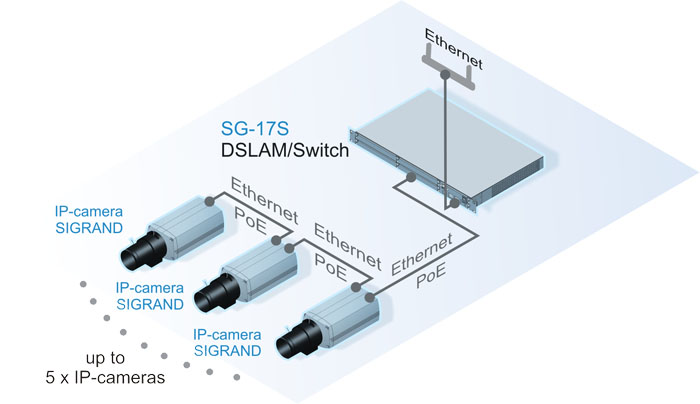1.2. Power over Ethernet¶
Each camera has two Ethernet ports linked together through a built-in Ethernet switch, so it is possible to connect cameras into a chain.
Cameras can be supplied with power over Ethernet (PoE) and transmit power further in a through-line way.
According to the PoE standard, there are two possible modes of powering a device, A and B. In version A, the device is powered through the signal pairs of the Ethernet cable; in version B, it is powered through spare pairs. The source of power supply can only use one of the versions, either A or B, while the receiver must support both.
Camera port “PoE mode A or B” is compatible with the PoE standard and can be powered both through the signal pairs and through spare pairs.
Camera port “PoE mode B” is used for connecting cameras into a chain. Spare pairs contacts of this port are connected in parallel with the corresponding contacts of spare pairs of the port “PoE mode A or B”.
When a single camera is connected, port “PoE mode A or B” is used; the other one, “PoE mode B port”, must be left unconnected.
When cameras are connected into a chain, only mode B is to be used; i.e. power must be supplied through spare pairs. In this case, one of the camera ports is to be connected either to the power-supply source or to the previous camera, and the other is to be connected to the next camera in the chain. Thus, in each camera spare pairs of both ports will be interconnected and therefore all the cameras in the chain will be powered.
A standard PoE source of power supply will not recognize a camera chain as a permissible load even if power is delivered through spare pairs. A camera chain can only be powered from a power-supply source which can power any load, even non-standard one.

